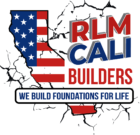Concrete Structures Can Be Repaired If You Follow These Repair Tips
Fixing concrete that has cracked or spalled in buildings seems like an obvious choice for reducing the costs associated with building ownership. On the other hand, if the damage sustained underneath is considerable, it may be more cost-effective in the long run to demolish everything and start over from scratch.
You should familiarize yourself with the following guidelines for repairing structural concrete that has been damaged.
Think About How Much It Will Cost You Over Time To Own It
When deciding whether to repair or replace damaged structural concrete, an important issue to take into consideration is the total amount of money that will be spent on operating the building over the course of its existence. It is possible that fixing it now will be less expensive, but spending more money on a replacement as a long-term solution might end up saving the structure a significant amount of money in the long run. When deciding between different solutions, it is important to take the total cost of ownership over time into consideration.
Testing Done With Galvanic Pulse And Ground-Penetrating Radar
As a component of any analysis of lifetime costs, unforeseen occurrences and the extent of harm must be determined. Testing methods that do not destroy the structure are widely utilized by engineers in order to collect accurate information about structures. This process includes activities like as sounding, testing with galvanic pulses, testing with ground-penetrating radar, and load tests.
As a result of having access to such facts on the state of a building, engineers are able to generate a more accurate prediction of remedial cost estimates. This, in turn, makes it significantly less likely that owners will suffer expensive change order shocks when deciding whether or not to perform repairs.
Structural Lifespan Review
In certain situations, the best course of action may consist in removing and replacing older buildings that still have a number of years left on the lifespan that was originally estimated for them. In most other circumstances, the repair is the most prudent course of action, particularly if the damage does not affect the building as a whole. In any circumstance, an engineer ought to carry out a structural lifespan review in addition to a condition analysis.
Determine the extent of the structural concrete damage and the cause of the problem.
Determine the extent of the structural concrete damage as well as the cause of the damage before choosing a method of repair. While some cracks might not necessitate any attention, others might have significant repercussions. Again, it is highly recommended that you get the assistance of a structural specialist in order to investigate any potential threats to the building.
Over Time, Cracks That Were Not Structural Can Become Structural
Cracks in a structure that are not considered structural may not represent a threat to the building’s overall integrity; yet, these cracks should still be repaired either for reasons of aesthetics or to prevent the cracks from getting worse over time and eventually becoming structural. Fractures of a modest nature might sometimes give rise to additional complications. To put it another way, there are just too many technical and chemical factors at play for a do-it-yourself solution to ever be successful.
Employing a professional is the one and only technique to discover the reason why your concrete is sinking. They are able to provide you with information regarding what is occurring beneath your concrete Foundation Inspection Near Me Hermosa Beach . Please get in touch with RLM Retrofit Foundation as soon as possible for any further information.










